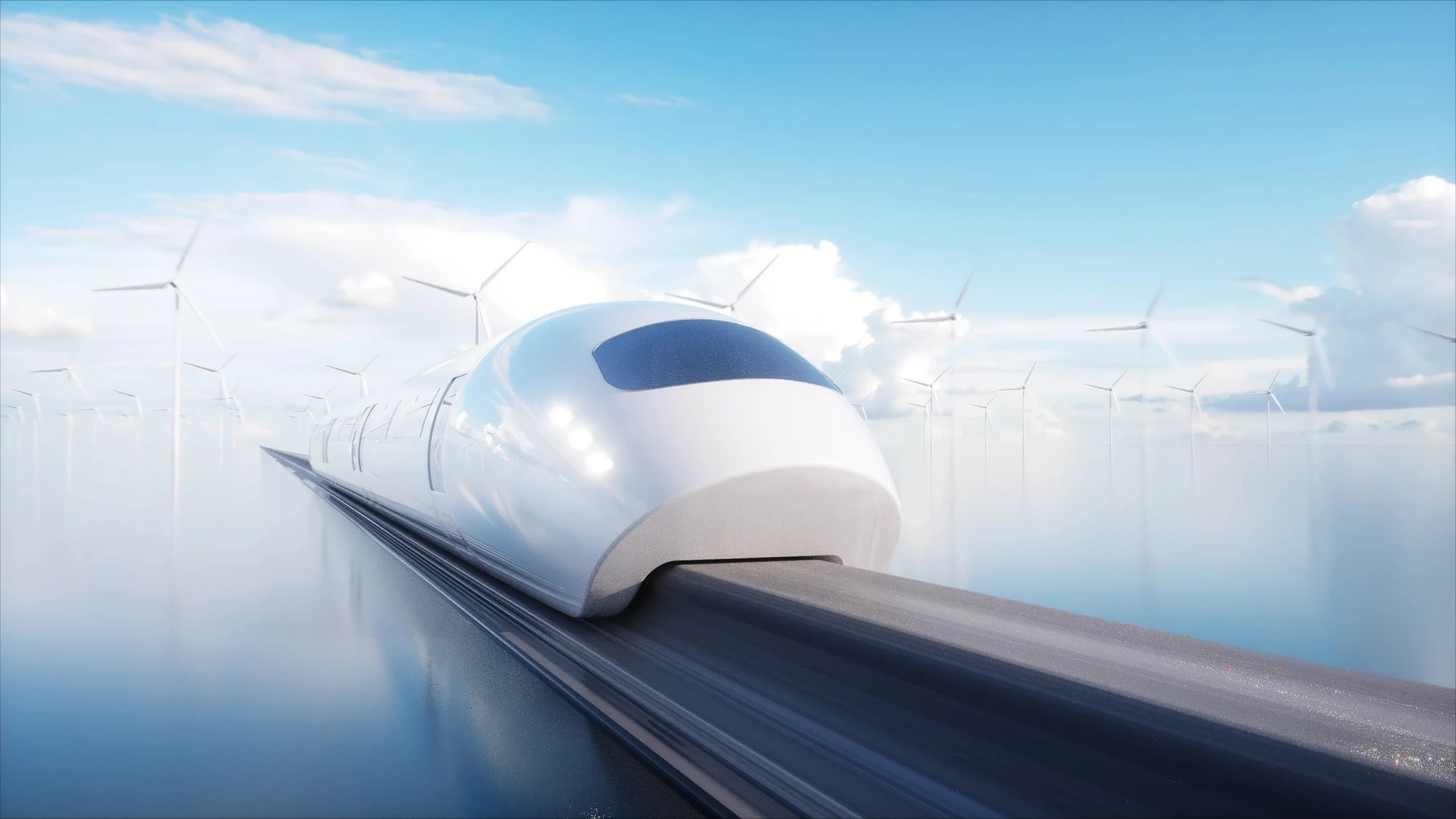Want a flying skateboard? Your own personal home fusion reactor? A wearable MRI scanner you can buy online? If a room-temperature, ambient-pressure superconducting material really has been found, that is just the tip of the technological iceberg.
Recently, the internet has been abuzz with the news that a new superconducting material called LK-99, which retains its properties at room temperature and ambient atmospheric pressure, may have been developed by a team of researchers at Korea University.
Because there have been false alarms about this sort of discovery in the past, the announcement was met with widespread skepticism and, to date, no one has been able to verifiably replicate the research. That being said, what if it's true? What would be the implications of such a material? It turns out that we're talking about a fundamental technological revolution on the scale of the invention of the transistor or the dynamo.
What is a superconductor?

A superconductor is a material that takes on some really exotic properties. When the right conditions are reached, all electrical resistance in the material suddenly vanishes and it generates a magnetic field. What this means is that it can carry an electrical current with incredible efficiency and almost no loss of energy through heat. It can also generate powerful magnetic fields.
The practical applications of superconductors have been known for decades, but these have been hindered because most superconducting materials have to be cooled with liquid helium to near absolute zero. Needless to say, maintaining these cryogenic temperatures requires a lot of very complicated, expensive, bulky, and hard-to-manage mechanisms.
This is the reason why MRI scanners, which use superconducting magnets, are so massive and why the bill for an MRI scan can make your eyes bug out of your head like a Tex Avery cartoon character.
It's also the reason why experimental fusion reactors are gigantic and why pilot projects, like one in 2021 where Commonwealth Edison used superconductors for power lines in the Chicago north side, were abandoned even though they showed several orders of magnitudes of improvements.
This is true even with more advanced superconductors that work at the temperature of liquid nitrogen. As for the few room-temperature superconductors, they only superconduct at pressures of 1.67 million atmospheres. Hardly practical.
But what about LK-99? If it really is a room-temperature, ambient-pressure superconductor, it would unshackle the technology and make it truly practical for a mind-boggling number of applications.
Energy storage, fusion power, floating buildings and the next computing revolution

The most obvious thing is that it would revolutionize power generation and transmission. Power lines with zero resistance would carry 200 times more current than a copper wire, but with no heat or loss, over longer distances at much lower costs.
In addition to this, if a superconductor is made into a loop and a charge is run through it, that charge will run about in that loop indefinitely without loss. This means you can use the superconductor to store energy for later use, which would be a boon to the solar and wind power industries that suffer from being intermittent power sources that need a practical and economic way of storing energy when the wind doesn't blow and the Sun doesn't shine. It would also mean batteries that are lighter, charge faster, and have higher energy density.
The magnetic fields produced by such a superconductor hold the potential for fusion reactors to shrink by orders of magnitude. You might not get ones that power your car or light your home, but they'd be small enough and cheap enough to be commonplace and even portable. More importantly, energy shortages and worries about carbon emissions would be a thing of the past as humanity enjoys clean, limitless energy.
Superconductors would take magnetic levitation to a whole new level. Maglev trains would become much faster, more efficient, much cheaper to build, and more common. The technology would also trickle down until we see trams floating down the road, maybe even cars or hoverboards – even buildings that could use such levitating technology to maintain and actively support structures without the need for additional power to do so once charged.
Then there are propulsion systems. With lighter, more powerful batteries and more efficient and more powerful electric motors, all-electric planes and other air vehicles could be larger, faster, and have longer range. You could even see watercraft with magnetohydrodynamic jets to propel them quickly and silently.

Computers would also have the potential of being altered beyond recognition. CPUs could be built without the need for cooling systems or current leakages, making them faster and more efficient. Beyond that, the quantum computer could come into its own as qubits, which are the quantum computing equivalent to transistors, wouldn't need cryogenic support systems. Large numbers of qubits could be installed close together and linked by superfast digital connections. In a single jump, quantum computers could leap from the lab and become the 21st century's answer to the PC.
Superconductors could lead to sensor systems that are as sensitive as their cryogenic versions, even on the quantum level, but could be much smaller. Imagine MRI scanners and similar devices that could be worn by patients or bleeding-edge imaging systems that are as easy to use as phone cameras. Or space telescopes as sensitive as the James Webb but a fraction of the size and able to be mass produced.
Undreamt of possibilities
However, the most revolutionary applications will be the ones that haven't been imagined yet. Up until the 1980s, computers were so large, expensive, and hard to gain access to that you needed a PhD in Boolean logic to book time on one. This meant that even the leading computer scientists had very little hands-on experience with the machines and very little real understanding of what they did or could do. As a result, they simultaneously overestimated computers and underestimated them.
Then came the silicon chip and computers shrunk like my bank account at tax time. Computers went from the lab to the office and then the home. Millions of people used them every day and had the chance to simply play with them. Very soon, everyone from software engineers to school kids understood computers not as number crunchers, but as data processors, and that they weren't mechanical oracles, but very useful, albeit frustrating, idiots. Meanwhile computers evolved from discrete machines to components, filtering deep into our technology and our daily lives.
After that, the computer revolution exploded, giving us an increasing cascade of digital advances, including the internet, virtual libraries holding more knowledge than anything in human history, ChatGPT, the smartphone, social media, and cat memes.
The same may turn out to be true for room-temperature superconductors as they change our lives and become so much a part of it that we no longer notice them. But, as the cookbook says, first catch your rabbit. We still don't know if LK-99 works, is practical to manufacture, or if it's the latest in a long line of tantalizing dead ends.
Still, it doesn't hurt to dream.








